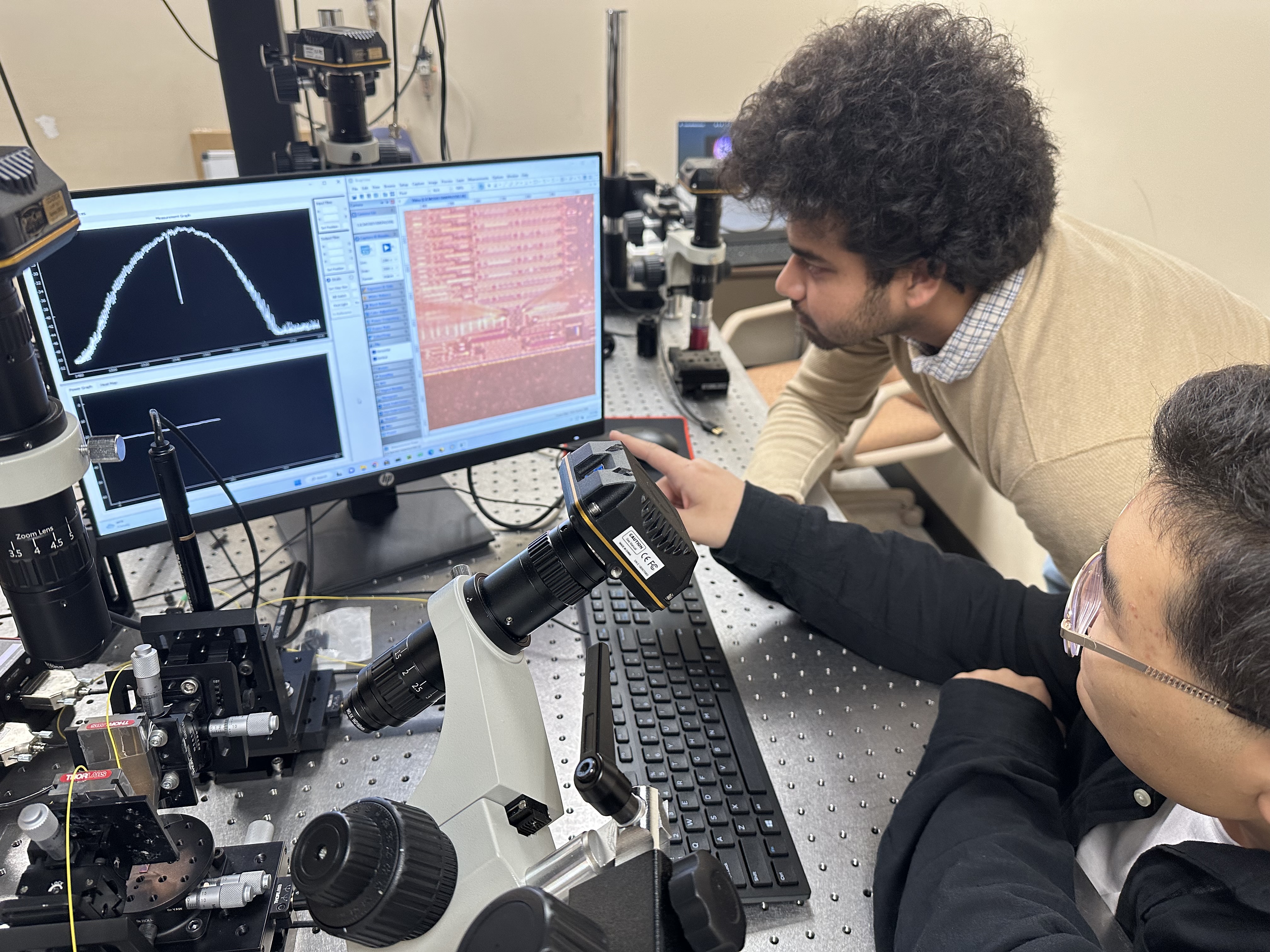Dayton Engineer

National Science Foundation grant to help researcher improve data storage capability
A University of Dayton researcher has secured $540,000 from the National Science Foundation (NSF) to aid his quest to find better ways to store and read the increasing amount of information in the world.
"Electronics are reaching the fundamental limits of storing large volumes of information and processing information at very, very high speeds," said Swapnajit Chakravarty, University of Dayton associate professor of electro-optics and photonics. "This project will examine the next generation of information storage and retrieval."
Chakravarty said increasing computing speeds is important especially in the area of artificial intelligence. The faster a larger volume of information is processed in a device using AI and machine learning, the more effectively it can make decisions. Take for instance a self-driving car, which has enough storage capacity to determine a possible obstacle. But with faster processing of stored information at its disposal, the self-driving car can process exactly what obstacle it is, anticipate how the obstacle could move and how the car should respond.
In addition to self-driving vehicles, Chakravarty said this could have applications in different brain-inspired computing platforms being investigated by researchers across the world, as well as quantum computing, a form of computing that promises to be much faster in the future than current classical computing methods.
"As an example, a current system can store and process 2x4. But if we can improve the system to already know '8,' it makes your computation faster, because you no longer have to take the time to compute 2x4. By performing the data storage, retrieval and computation in a semiconductor chip with light, one can significantly speed up computation," Chakravarty said.
Chakravarty also intends to use the project as a workforce development tool, with support from the Intel-funded Ohio-southwest Alliance on Semiconductors and Integrated Scalable Manufacturing motivated by the CHIPS Act passed by Congress in 2022.
"By exposing students in the physical sciences and engineering, especially students in our new semiconductor manufacturing minor, to these research activities, we hope to build industrial manpower to address the significant future U.S. need in the semiconductor industry, not only for chip fabrication but also its applications in next generation computing," he said. "This workforce development aspect is ingrained into the way my research group works. Students who work with me need to learn these hands-on skills, so it's already built into this."
Graduate and undergraduate students working with Chakravarty on this project will design information storage devices and send the designs for manufacturing to commercial foundries. They also will manufacture information storage devices in UD's cleanroom, a controlled environment where aerosols, dust and other particles several times smaller than a human hair are limited to less than 10-100 particles per cubic foot. The students and researchers will test the devices' performance in Chakravarty’s optical chip measurement labs at UD.
Visit the NSF award page for more information about the program. Chakravarty also will collaborate with Mrigendra Rajput, UD assistant biology professor, to examine how data already stored in DNA can be retrieved with the same devices.
Since last fall, including this latest project, the National Science Foundation has tapped Chakravarty to lead or help lead three grants totaling approximately $1.2 million. He is working toward developing a low-cost, hand-held device to test for and identify diseases and biohazards. As a champion of hands-on learning, he helped lead a 10-week session this summer for undergraduate students from around the nation to receive hands-on training and conduct research in different aspects of semiconductor chip manufacturing.
For interviews, contact Shawn Robinson, associate director of news and communications, at srobinson1@udayton.edu.
